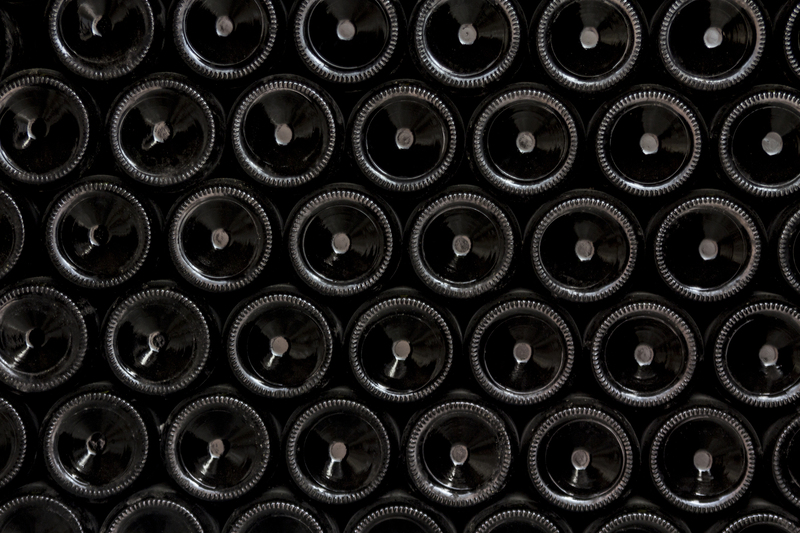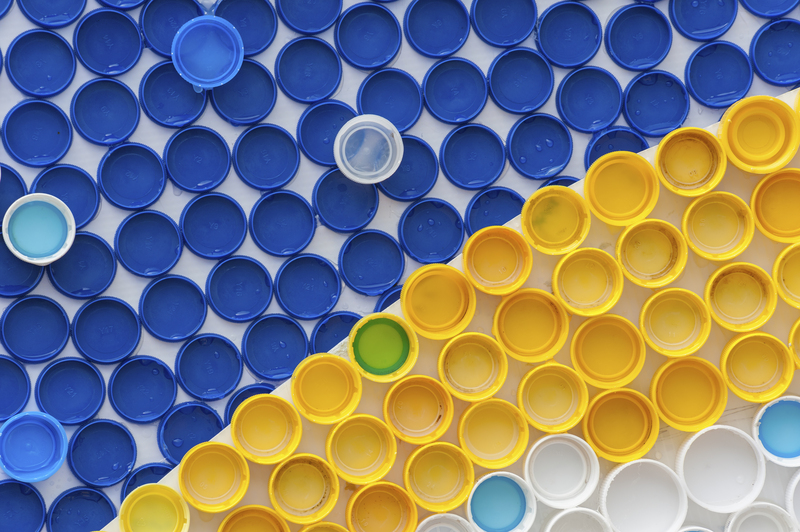Properly Separating Materials for Pot and Pan Recycling: The Ultimate Guide
Recycling is an integral part of modern waste management strategies. When it comes to pots and pans, improper disposal can pose significant environmental challenges due to their mixed materials and coatings. But, did you know that by properly separating materials for pot and pan recycling, you can help reduce landfill waste and promote the recovery of valuable resources? This comprehensive guide will walk you through the correct way to recycle your pots and pans, ensuring you understand every step of the process.
Why Is Pot and Pan Recycling Important?
Millions of households replace their cookware every year, resulting in a substantial amount of metal waste. Often, old pots and pans are thrown away, ending up in landfills where their materials can take decades or even centuries to decompose. By recycling these items, you can:
- Conserve resources - Extract and reuse metals like aluminum, steel, and copper.
- Reduce landfill waste - Keep non-biodegradable materials out of landfills.
- Minimize energy use - Recycling metals often uses less energy than mining new materials.
- Support the circular economy - Promote reuse and remanufacturing of valuable materials.
However, pots and pans present unique recycling challenges, as they often contain a combination of different materials. Properly separating materials for pot and pan recycling is crucial to ensure each component is recycled efficiently.

Understanding the Materials in Pots and Pans
Before tossing your cookware in the recycling bin, it's important to identify what they're made of. Most pots and pans are constructed using more than one type of material. Here are the common components found in household cookware:
- Metals - Stainless steel, aluminum, copper, or cast iron form the body or core.
- Non-metal attachments - Handles and lids made from plastic, silicone, bakelite, or wood.
- Non-stick coatings - Layers of Teflon or ceramic to provide easy-release surfaces.
- Glass lids - Often tempered glass, sometimes combined with metal or plastic handles.
Recycling centers process these materials differently, so proper separation ensures anything that can be recycled will be salvaged, and materials that cannot be recycled are managed appropriately.
Key Steps: How to Prepare Pots and Pans for Recycling
Let's break down the process of properly separating pots and pans for recycling into detailed steps. By following these, you'll maximize the chances that your cookware will be responsibly processed and repurposed.
1. Clean Your Cookware
- Wash your pots and pans thoroughly, removing all food residue and oils. This keeps contaminants out of the recycling stream.
- Tip: If your cookware has stubborn stains or build-up, soak it in warm, soapy water and scrub before recycling.
2. Identify and Sort By Materials
Examine your pots and pans for the following:
- Base metal (stainless steel, aluminum, copper, cast iron)
- Handles - Note whether they are metal, plastic, silicone, or wood
- Coatings - Look for non-stick coatings or enamel
- Accessories - Detachable lids, knobs, or additional materials
If your cookware has multiple types of metal or a mix of metal and other materials, you may need to disassemble them where possible.
3. Remove Non-Metal Components
- Unscrew or detach plastic, wooden, or silicone handles and knobs. Most recycling centers do not process these materials with metals.
- If handles or knobs cannot be removed easily, check with your local recycling provider for advice, or place them in general waste where necessary.
- If your lids are glass with metal or plastic parts, separate these materials by unscrewing or prying off the attachments.
Pro Tip: Use a screwdriver or pliers where needed, but do not force or damage the pot, as unsafe separation can make recycling more difficult.
4. Check for Specialty Coatings
- Pots and pans with non-stick coatings, such as Teflon, typically cannot be recycled with regular scrap metal due to chemical residues.
- Some centers accept coated pans, but always consult with your local facility first. If they do not accept them, these may need to be disposed of as general trash, or handled through specialized recycling programs.
5. Group Recyclables by Material
- Metals: Place aluminum, stainless steel, cast iron, and copper items together if mixing is allowed by your recycler.
- Glass: Sort clean glass lids with other recyclables if your facility processes glass.
- Plastic/Silicone: Separate these for curbside plastic recycling, if accepted.
6. Deliver to the Correct Recycling Point
- Scrap metal yards - Accept bulk metals, such as separated pots and pans with coatings removed.
- Household recycling centers - Check if they take small appliances or household metals.
- Charities and donation centers - Usable cookware may be donated instead.
- Municipal hazardous waste drop-off points - For cookware with persistent coatings or suspected toxic elements.
It's recommended to call ahead or check online with your local facility so you know exactly what categories they accept and if any specialty programs exist for recycling materials from old pots and pans.
Special Cases: How to Recycle Different Types of Pots and Pans
Depending on the material and condition of your cookware, different recycling approaches are required. Here are some specific tips:
Stainless Steel Pots and Pans
- Most are 100% recyclable once non-metal parts are removed. Stainless steel is valuable to scrap metal centers.
- If you can't remove handles, ask the center if they'll accept as is, or if you should place them in the regular waste stream.
Aluminum Cookware
- Aluminum is lightweight and valuable, but may have non-stick coatings. Only recycle if free from excessive coatings or non-aluminum attachments.
- If the item is visibly damaged or degraded, check with the processor before dropping it off.
Cast Iron Cookware
- Cast iron is heavy and valuable at scrap metal yards.
- Remove any attached wooden or plastic handles. If badly rusted, it is still recyclable, though restored cast iron can also be donated for reuse.
Copper Pans
- Copper fetches a high price at scrap dealers. Ensure all non-copper parts are separated.
- If the pan is lined with another metal or has coatings, verify if the processor will accept it.
Non-Stick, Teflon, or Ceramic Coated Pans
- These are difficult to recycle due to the chemical coatings, which can contaminate the metal during processing.
- Some specialty recyclers can process them-- always check for local take-back programs or dedicated recycling days for cookware.
Enamel-Coated Cookware
- Enamel coatings often include glass or ceramic components, which require different processing than metal.
- If you can, remove the coating before recycling, or ask if your scrap metal facility can process enameled items.
Glass Lids and Accessories
- Glass lids are only recyclable if they are not tempered, but most cookware glass is tempered and may not be accepted by curbside programs.
- If you are unsure, ask your recycler, or consider donating the lid if it's in good condition.
What Happens to Pots and Pans After Recycling?
Recycled pots and pans undergo several steps at material recovery facilities and metal processors:
- Shredding: Items are broken down into small pieces for easier sorting.
- Separation: Powerful magnets and sensors sort metals like steel, aluminum, and copper.
- Melting: The separated metals are melted down for purification.
- Reforming: The purified metals are formed into new products, such as automotive parts, building materials, and even new cookware.
By separating your pots and pans properly for recycling, you ensure more of the materials are recovered, and less is lost to landfill or pollution.
Alternative Options: Reuse Before Recycling
Before considering recycling, always think about how you might reuse or repurpose your old pots and pans. Here are some creative ideas:
- Planters or garden containers
- Storage for utensils, tools, or craft supplies
- Outdoor camping or grilling cookware
- Art projects and upcycled crafts
- Donation to local shelters or thrift stores
One person's trash can truly be another person's treasure!
Tips for Choosing Recyclable Cookware in the Future
- Opt for pans and pots made from a single type of metal, with easily removable handles.
- Choose cookware brands known for offering take-back recycling programs.
- Avoid excessive coatings and non-metallic accessories when possible.
- Research the recyclability or environmental impact of materials before purchasing new cookware.

Frequent Questions About Pot and Pan Recycling
Can I recycle Teflon or non-stick pans?
In most areas, non-stick coatings are problematic for recycling. Check for local take-back programs or specialty processing, but in many cases these will need to be discarded if no options exist.
What should I do with pots and pans that have plastic handles?
Try to remove all plastic handles before recycling the metal parts. If you can't remove them, ask your recycling center if they'll accept the item as is.
Will my curbside recycling pick up old cookware?
Most curbside programs do not accept pots and pans. You'll need to take them to a scrap metal yard or municipal recycling facility instead.
Are there any recycling centers that will pick up cookware?
Some metal scrap recyclers offer pickup services, especially for bulk items. Call ahead to see if service is available in your area.
Conclusion: Do Your Part with Proper Pot and Pan Recycling
Properly separating materials for pot and pan recycling helps maximize resource recovery while reducing the burden on landfills. By cleaning, disassembling, sorting, and delivering your cookware to the appropriate facilities, you play an essential role in the circular economy. Remember, when in doubt, contact your local recycling provider for guidelines, and always look for ways to reuse or donate cookware before opting to recycle. Together, we can make a world of difference--one pot and pan at a time!
